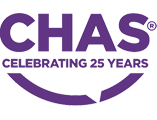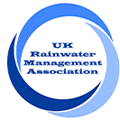Greywater Recycling Frequently Asked Questions
Greywater Recycling is increasingly being used in newly constructed commercial developments around the UK, especially in the Southeast where water scarcity is becoming a great concern. Awareness of Greywater Recycling is relatively low in the UK compared to neighbouring European countries where system installations are widespread.
Despite the increasing popularity of Greywater Recycling, many confuse the terminology of rainwater harvesting and greywater recycling which are two different technologies. Unlike rainwater harvesting, greywater collects from showers, hand wash basins and bathtubs for reuse. Rainwater Harvesting collects from the large surface area on the roof of a building.
Stormsaver are here to help answer all your greywater recycling questions. See our frequently asked questions below.
Greywater Recycling Systems are often installed by a specialist mechanical and electrical contractor during the construction process.
Stormsaver offer full installation services for our Aqualoop Greywater Recycling System. Installation by a specialist like Stormsaver can mitigate the risk of aborted commissioning visits due to incorrect installation. Correct installation of the greywater recycling system is essential for the long-term operation of the system.
It is important to check which pipework is being connected to the greywater recycling system. Exact details of which pipework should be connected is included in the Stormsaver installation manual.
Maintenance of a greywater recycling system is significantly easier and more cost-effective if the system is complete with an automatic chemical dosing system.
Greywater runoff from showers, bathtubs, and wash basins include naturally occurring biofilm. When left untreated, biofilm can create blockages within the pipework of the greywater recycling system.
Systems which have been designed with long-term operation in mind are supplied with automatic chemical dosing systems. The chemical dosing system will complete an automatic backwash of the pipework within the system to eliminate the risk of blockages. The chemicals are not used to treat the incoming greywater supply, but just the surrounding pipework.
Greywater recycling systems with chemical dosing systems also reduce throwaway culture by eliminating the need for frequent cartridge or filter replacements.
Chemical replacements can be completed by a trained Stormsaver Engineer as part of bi-annual service visits.
Greywater Recycling Systems can collect and re-use wastewater from showers, bathtubs and handwash basins.
Greywater Recycling is ideal for buildings with a large volume of greywater run off and a high non-potable water consumption rate, including leisure centres, student accommodation, residential apartments, hotels, offices, and many other building types.
Greywater entering a Greywater Recycling System undergoes thorough filtration to ensure a high-quality supply of safe, sustainable water for non-potable use.
Greywater is filtered through the following steps;
Pre-tank Filter – A mesh filter arrangement filters water to 1000 microns (equivalent to 1mm). The Pre-tank filter is designed to remove larger debris, including hair and other physical contaminants. The Aqualoop Greywater Recycling System is equipped with a high-pressure automatic backwashing nozzle to remove excess build-up of physical debris from the mesh filter.
Oxygenation – Greywater entering the treatment tank is subjected to an oxygenation process to create a positive environment for the removal of bacteria.
Growth Bodies – Aqualoop Greywater Recycling takes advantage of a moving-bed biological reactor arrangement to achieve high levels of water quality. Growth bodies are situated within the treatment tank and have a high surface-to-volume ratio to create a surface for the healthy bacteria to grow.
Membrane Technology – Aqualoop Greywater Recycling processes water through hundreds of hollow-fibre bundles to remove viruses and other harmful bacteria.
Installing a Greywater Recycling System has many benefits. In a world of scarce water supplies, reliance on drinking water supplies can be dramatically reduced by installing Greywater Recycling. Systems can also contribute towards professional sustainability accreditations, such as BREEAM.
Just like any mechanical or electrical system, a Greywater Recycling System requires pre-planned maintenance in the form of regular servicing by a trained professional. Specialists like Stormsaver will clean all filtration devices within Greywater Recycling Systems to prevent debris build up. Greywater Recycling Systems should also receive a full tank clean every three years. The frequency of tank cleans will also be dependent on usage rates. Contact us to find out more.
Greywater Recycling Systems reduce reliance on mains water supplies by providing a sustainable, non-potable water supply. Greywater Recycling Systems can supply toilets, urinals, irrigation systems, and fleet washing facilities.
Greywater Recycling Systems reduce reliance on mains water supplies by providing a sustainable, non-potable water supply. Greywater Recycling Systems can supply toilets, urinals, irrigation systems, and fleet washing facilities.
Greywater Recycling Systems capture reclaimed water from showers, bathtubs and handwash basins for reuse as a non-potable water supply for applications including, toilet flushing, vehicle wash plants, irrigation, and other commercial processes. Greywater Recycling Systems take advantage of membrane filtration technologies to ensure any debris and finer particles are safely removed from the sustainable water supply.






